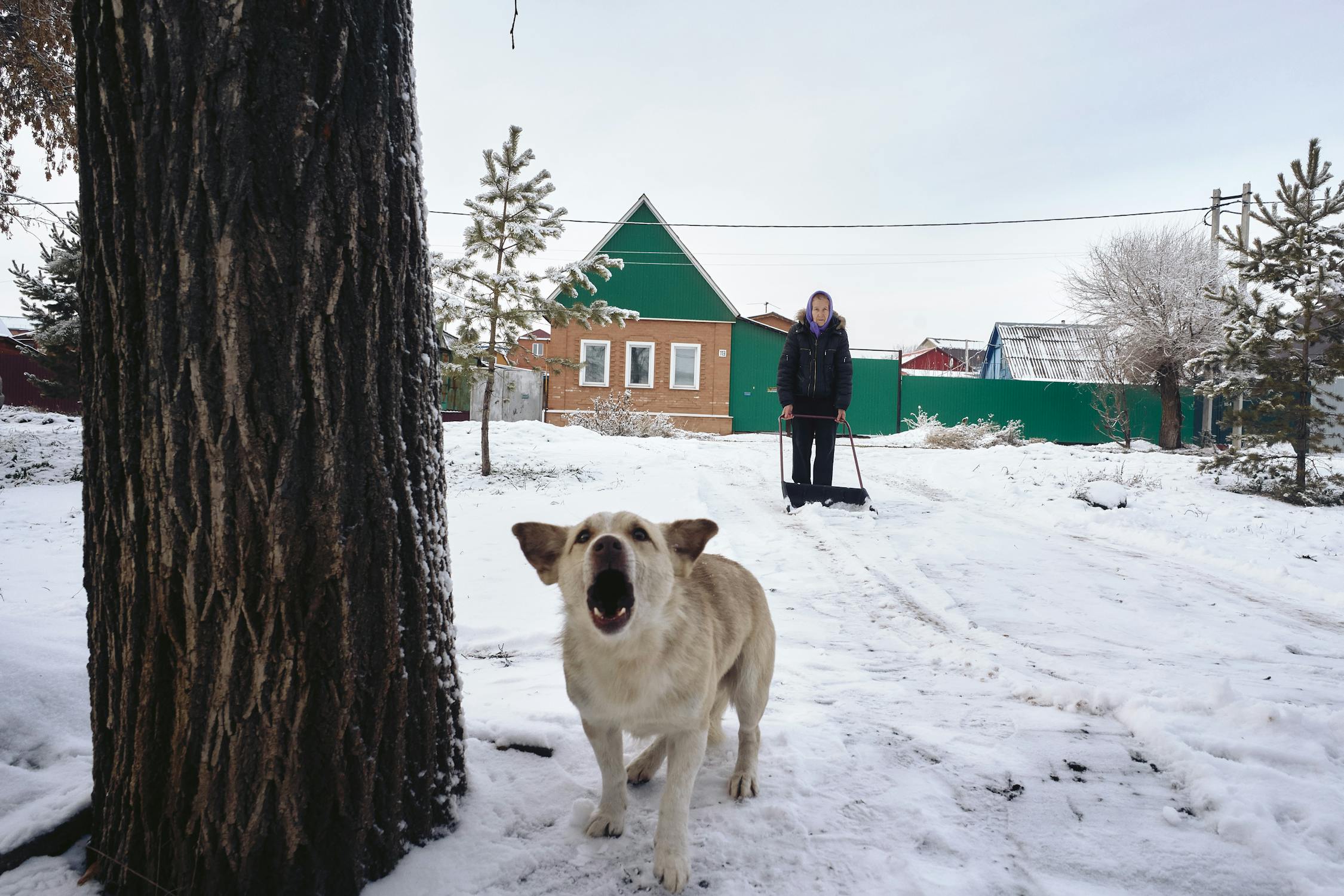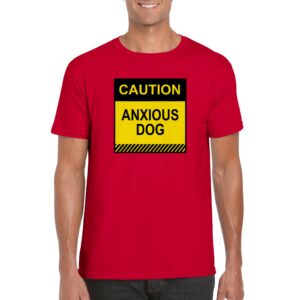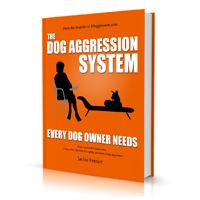Your cart is currently empty!
Why Reactivity is Often a Warning Sign for Aggressive Behavior in Dogs

If you are learning about dog aggression, you could be forgiven for thinking reactivity is the same as aggression. It seems like the terms are often interchanged. However, there are differences: reactivity in dogs refers to an overreaction to a stimulus, such as another dog, a person, noise or even touch. On the other hand, an aggressive dog displays intentional behavior with the intention to harm others.
For example, some dogs become difficult to manage in a urban settings where there is a lot of noise from cars and other activity. Some dogs become more excitable when its windy to the point of becoming difficult to walk on a leash. Some of a heightened drive to chase.

A reactive dog may also have a strong response to a stimulus due to fear, anxiety, or excitement, but their behavior is not necessarily intended to harm others. Reactivity can stem from a lack of socialization, past traumatic experiences, or genetic predisposition.
The best way to think about reactivity is to think of intensity. While intensity does not mean a dog is going to become aggressive, it may mean that they could be more easily irritated, bothered or anxious.
Aggression can occur due to a variety of reasons, such as fear, territoriality, resource guarding, or pain. A reactive dog may get there sooner, but aggressive behavior is more than simple a “reaction. Much of the behavior we consider to be aggressive is actually communication that is basically saying: back off. Often we’re missing many of the signs that the dog is showing us that should tell us they are uncomfortable and this can be the start of greater problems.
When behavior that is designs to harm occurs as the first response instead of the last response at the end of a sequence of warning communication that it starts to become problematic. Aggression is considered pathological, meaning that is related to a disorder or a disease when it occurs without there being any threat.
The Connection Between Reactivity and Aggression

While reactivity refers to a strong reaction and not necessarily the intent to harm, a paper published in 2014 analyzing survey responses from more than 5600 respondents showed, ” …“reactivity to stimuli,” i.e., physical reactivity to sudden movement or sound at home, was shown to be significantly associated with owner-directed aggression in 13 breeds, child-directed aggression in eight breeds, stranger-directed aggression in nine breeds, and dog-directed aggression in five breeds. These results suggest that “reactivity to stimuli” is simultaneously involved in several types of aggression.” 1
Both aggression and reactivity indicates a heightened level of arousal meaning physiological changes such as an increased heart rate, increased blood pressure, and a readiness to respond as a result of fear, stress, anxiety, etc. and an increased sensitivity to stimuli (i.e. another dog, a person, etc.).
If a reactive dog is repeatedly exposed to triggers that are overwhelming and cause a strong negative emotional response, the dog can become sensitized to those triggers and may become more reactive over time. This compounds the negative experience because the feelings of fear and anxiety are so unpleasant in and of themselves.
But it is important to understand how fear and anxiety are different. Fear leads a dog to try to escape or avoid to start with. Fear is specific. Anxiety can be vague, because the dog may not know what bad thing can happen and so the dog has be hyper-vigilent and on guard.
The purpose of fear is to protect ourselves, and the purpose of anxiety creates a strong impulse to try to solve the problem. Fear and anxiety drive us to act but often in different ways.
If a dog is repeatedly triggered by a particular person or animal and is not taught appropriate coping mechanisms, they may eventually resort to biting or attacking. This is not only as a way to defend themselves, but also as a way to cope with the feelings itself. Fear can lead to anxiety and anxiety can lead to fear.
It is essential to recognize reactivity in dogs as a potential warning sign for future aggressive behavior and address it through proper training and behavior modification techniques. By addressing reactivity early on, owners can help prevent the escalation of behavior and create a more positive and safe environment for their dog and others around them.
The Role of Genetics in Reactivity
Reactivity in dogs can have both genetic and learned components. Genetics can play a role in a dog’s temperament and behavior, and certain breeds may be more predisposed to reactivity than others. For example, breeds that were originally bred for guarding or protection may have a higher likelihood of being reactive to new stimuli or perceived threats. Additionally, some studies have suggested that certain genetic mutations may be associated with reactivity in dogs.
However, it is important to note that genetics alone do not necessarily determine a dog’s behavior. Environment and experiences can also shape a dog’s behavior, and learned behavior can contribute to reactivity. For example, a dog that has not been well socialized as a puppy may be more reactive to new situations or people.
Factors such as training, socialization, and past experiences can all contribute to a dog’s level of reactivity. Dogs can learn to be less reactive through training and behavior modification techniques that help them develop new coping mechanisms and ways of responding to stimuli.

In summary, while genetics can play a role in a dog’s propensity for reactivity, it is not the sole determining factor. A dog’s environment, experiences, desensitization and training can also significantly impact their behavior and level of reactivity.
Dogs who are reactive for genetic reasons can benefit from gentle and gradual desensitization.
Other factors Involved in Reactivity
There are several other factors that can contribute to a dog’s reactivity, including stress, diet, illness, and pain. In time, anxiety tends to feed itself regardless of the factors that contribute. Dogs may come to associate unpleasant or intense experiences with people and then become anxious about being anxious. This can spread to an anxiety about other animals, sounds or other conditions.
It’s always wise to be sensitive to other factors that can contribute to reactivity.
Stress
Stress is a significant factor that can cause or exacerbate reactivity in dogs. Stress can be caused by various factors such as changes in the environment, routine, or social dynamics, and can lead to a dog feeling anxious, fearful, or overwhelmed. When a dog is stressed, they may be more reactive to stimuli or have a lower threshold for reacting. Use more caution during holiday periods, periods where households may be under stress themselves, or preoccupied with special events like weddings, funerals, or when visitors come, etc.
Inconsistent response from people can lead some reactive dogs to wary of people, especially those they can’t predict or antispate. It is common for dogs to growl at one person in the house while never having issues with another.

Boredom is another critical issue. Dogs are animals that are stuck indoors with nothing to do for extended periods of time. This can lead to not only boredom, but frustration or depression. Much more emphasis on providing environmental enrichment could most likely be recommended to the majority of pets.
Diet
Diet is often overlooked in influencing dogs, both in the short term, but particularly the long term. Yet diet can also play a role in a dog’s behavior and level of reactivity. A diet that is deficient in certain nutrients or contains high levels of additives and preservatives may contribute to a dog feeling anxious or uncomfortable, which can increase their reactivity. Additionally, food sensitivities or allergies can cause physical discomfort and contribute to a dog’s reactivity. Most importantly and probably least understood is the influence of a dog’s gut microbiome which can have wide ranging impact on both mental and physical health and behavior.
Illness and/or Pain
Illness and pain can also contribute to a dog’s reactivity. A dog that is in pain or discomfort may be more irritable and reactive to stimuli. Similarly, certain medical conditions such as thyroid imbalances or neurological disorders can cause changes in behavior that can contribute to reactivity.
Holistic approach to treatment
Trainers focus on training, as do many dog owners when it comes to treating dog aggression and managing reactivity. But there may be chemical responses and changes in the body that mean that a dog is simply more reactive than other dogs. These tendency for reactivity should be considered when evaluatiing behavior and developing a plan to improve a dog’s behavior.
Overall, in a dog predisposed to reactivity more than other dogs, it is essential to consider all possible factors that could contribute to a dog’s reactivity when developing a behavior modification plan. Addressing any underlying health issues, managing stress, environmental issues and ensuring that the dog’s diet and overall well-being are optimized can all help to reduce a dog’s reactivity and improve their behavior.
And finally, dogs are individuals. Some dogs will always be overwhelmed by sound and external stimuli just like some people are. We need to take all these factors into account for the best outcome possible.
References
“Reactivity to Stimuli” Is a Temperamental Factor Contributing to Canine Aggression, Sayaka Arata, Yukari Takeuchi, Mai Inoue, Yuji Mori, Published: June 27, 2014, https://doi.org/10.1371/journal.pone.0100767
ADVERTISEMENT
The Dog Aggression System Every Dog Owner Needs E-book

Anxious Dog Shirts only available in our shop

Keep people away with our Stand back shirts

